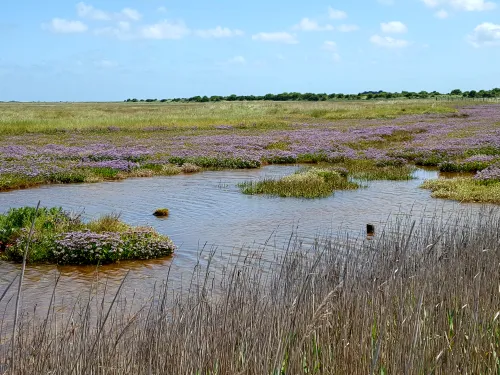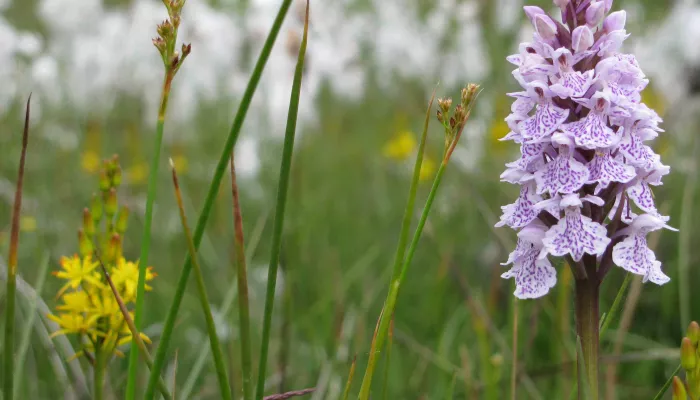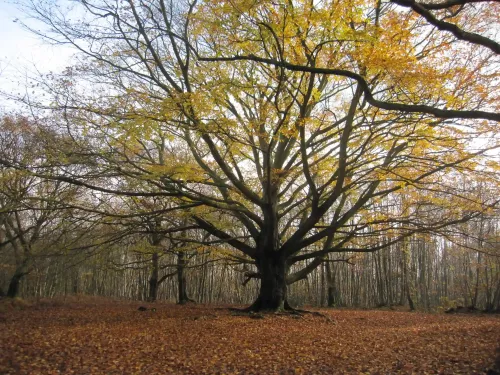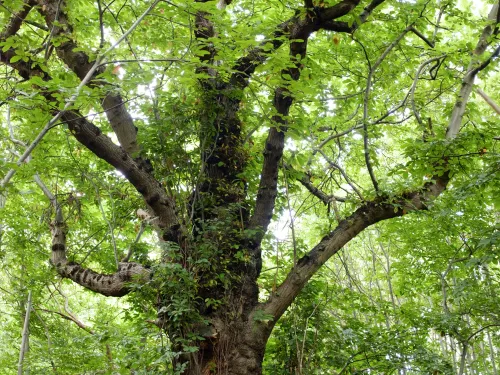
What my Kent Wildlife Trust membership means to me
Teacher, campaigner, and member Kerry Sabin-Dawson talks all about her membership journey in this blog.

Britain is currently one of the most nature depleted countries in the world. The decline of nature puts our very survival and prosperity under threat. Wilding seeks to restore the balance between humans and nature, creating more biodiverse and climate resilient environments.
By restoring native plants and animals you can establish habitats and food supplies that attract a variety of species, actively contributing to gains in biodiversity. Reintroducing indigenous flora and re-wilding near water bodies can help mitigate the impact of extreme weather and can provide valuable carbon absorption, helping to contribute towards carbon storage and climate resilience.
Planning your wilding project involves a thoughtful consideration of your available space. Whether it's a schoolyard, community garden, or a nearby green space, start by assessing the current state of the area. Take note of key features that can influence your wilding efforts and identify any potential challenges that may arise. Consider soil type, light availability, existing flora and fauna, as well as what that space is currently used for. Understanding the existing conditions is crucial in developing an effective strategy for your wilding project. This initial assessment sets the stage for creating a tailored plan that aligns with the unique characteristics of your chosen space, ensuring a successful and impactful wilding journey.
Take a moment to define your goals for the project. Are you aiming to attract specific wildlife to the area? Perhaps you're interested in creating a pollinator-friendly space to support local ecosystems? Alternatively, your objective might be as straightforward as enhancing the natural beauty of the surroundings. Clarifying your goals provides a focused direction for your wilding efforts, guiding subsequent decisions and actions. Whether it's fostering biodiversity, supporting local wildlife, or simply beautifying the space, having distinct objectives ensures that your wilding project aligns with the vision you have for the area.
Selecting native plants is crucial for attracting local wildlife. If it’s bees and other pollinators you’re looking to attract, this handy guide will let you know the best native plants for setting up your very own nectar café. If it’s butterflies and moths you’re after, then check out this guide for all you need to know on native plants and shrubs that butterflies will flock to. Looking to sow your very own wild patch or mini-meadow? Then take a look at our guide for the best tips on native wildflower seeds and how to get started.
Be sure to check out our Actions page for more hints and tips on all things wilding. From choosing native plants for your project, to planning a gravel garden, bog garden, coastal garden, or woodland edge garden, we’ve got guides and tips for you!
Creating wildlife habitats could involve incorporating features such as bird boxes, bug hotels, and ponds to establish diverse and thriving ecosystems. Bird boxes offer shelter for avian species, bug hotels serve as nesting and hiding spaces for insects, while ponds will attract amphibians and aquatic life as well as a number of invertebrates. Our Actions page has plenty more hints and tips for creating a range of habitats, including hedgehog homes, log shelters, and bee hotels.
Engaging students or community members in the hands-on creation of these habitats not only contributes to the well-being of local wildlife but also fosters a sense of environmental stewardship. This collaborative approach encourages a deeper connection to nature and ensures the sustained success of your wilding project by actively involving the community in the enhancement of their natural surroundings.
Whilst the concept behind wilding relies on letting nature thrive on its own, it’s important to note that some degree of intervention and maintenance is important to help control invasive species, enhance biodiversity, bolster ecosystem resilience, and address the impact of other human interactions (litter, maintaining pathways, etc).
Develop a comprehensive strategy that includes regular ecosystem health checks, prioritises weeding to address challenges, and actively engages the school or community group. This proactive maintenance approach not only preserves the integrity of the natural habitat but also cultivates a collective sense of responsibility, ensuring the continued success of your wilding space and its positive impact on the local environment.
Embarking on a wilding journey can be a fulfilling and rewarding experience for all involved. By taking these steps, schools and community groups can contribute to the conservation of local ecosystems and inspire a love for nature which will last a lifetime.
Begin your Wilder Kent Awards journey today and join a growing army across Kent in the fight against the climate and nature crises. Last year, we had 65 winners from across the county and we’re hoping 2024 will be our most successful yet – with even more people taking positive actions for nature and wildlife.
Sign up to the Wilder Kent Awards today!

Teacher, campaigner, and member Kerry Sabin-Dawson talks all about her membership journey in this blog.

Natasha Ruskin explores something terrifying: a world without woodlands.

Ever wondered how planting trees or restoring soil can help fight climate change? Carbon sequestration is nature’s quiet housekeeping - learn more in this blog.